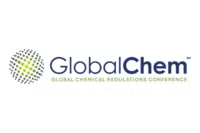WASHINGTON (March 4, 2022) — The American Chemistry Council (ACC) today filed comments with the Environmental Protection Agency regarding its updated risk determination for Cyclic Aliphatic Bromide Cluster (HBCD). Of particular concern, for the first time, EPA has taken a “whole chemical approach” to a risk determination—instead of making “condition-of-use-specific” determinations. Also, in a critical change of course, the Agency has chosen to assume that personal protective equipment (PPE), including PPE required by OSHA, is not used in the workplace.
EPA should withdraw this risk determination and reconsider its whole chemical approach in its entirety before implementing it, including the option of withdrawing this policy outright.
“If not, the Agency must provide a reasoned explanation for these policy changes including better clarity, principles, and criteria for using these approaches. And it must provide an opportunity for public comment on these overall policy changes before applying them to any chemical substance.”
In its comments submitted to EPA, ACC expressed several concerns with the risk determination process that need to be addressed. This included discussion that:
- The application of a single “whole chemical” unreasonable risk determination, when there are conditions of use that the Agency has determined do not present an unreasonable risk, ignores the possibility of “no unreasonable risk” determinations for a chemical under its conditions of use. This is inconsistent with the statute.
- Assuming no use of PPE runs counter to the Occupational Safety and Health Act’s statutory and regulatory requirements.
- Addressing PPE (and other OSHA requirements) only in the risk management rule, not as part of the conditions of use in the risk evaluation, has significant potential impacts.
- The approaches lack clarity, principles, criteria and justification.
For a deeper dive into ACC’s comments, including ACC’s recommendations to EPA about how to address these problems and its suggestions for alternative approaches, go here to read the full comments.


